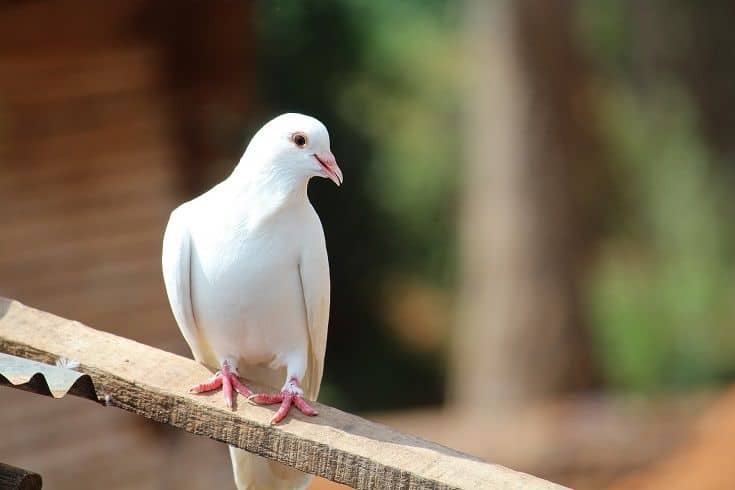When people think about doves, they typically think of their association with Christianity, peace, or the symbolic release of the white-plumed birds at weddings or funerals. Doves play many different roles in our society, but there’s more to this bird species than meets the eye.
There are hundreds of species of doves, each with its own unique characteristics and histories. Read on to find 16 interesting facts about doves that just may change your stance on them.

The 16 Dove Facts
1. Doves are pigeons
Doves and pigeons refer to the 340-plus species of birds in the Columbidae family. There’s no difference between the two, but colloquial English often categorizes them according to size. Birds referred to as doves are typically smaller than those called pigeons. However, this distinction is not always consistent and doesn’t appear to exist in most other languages.
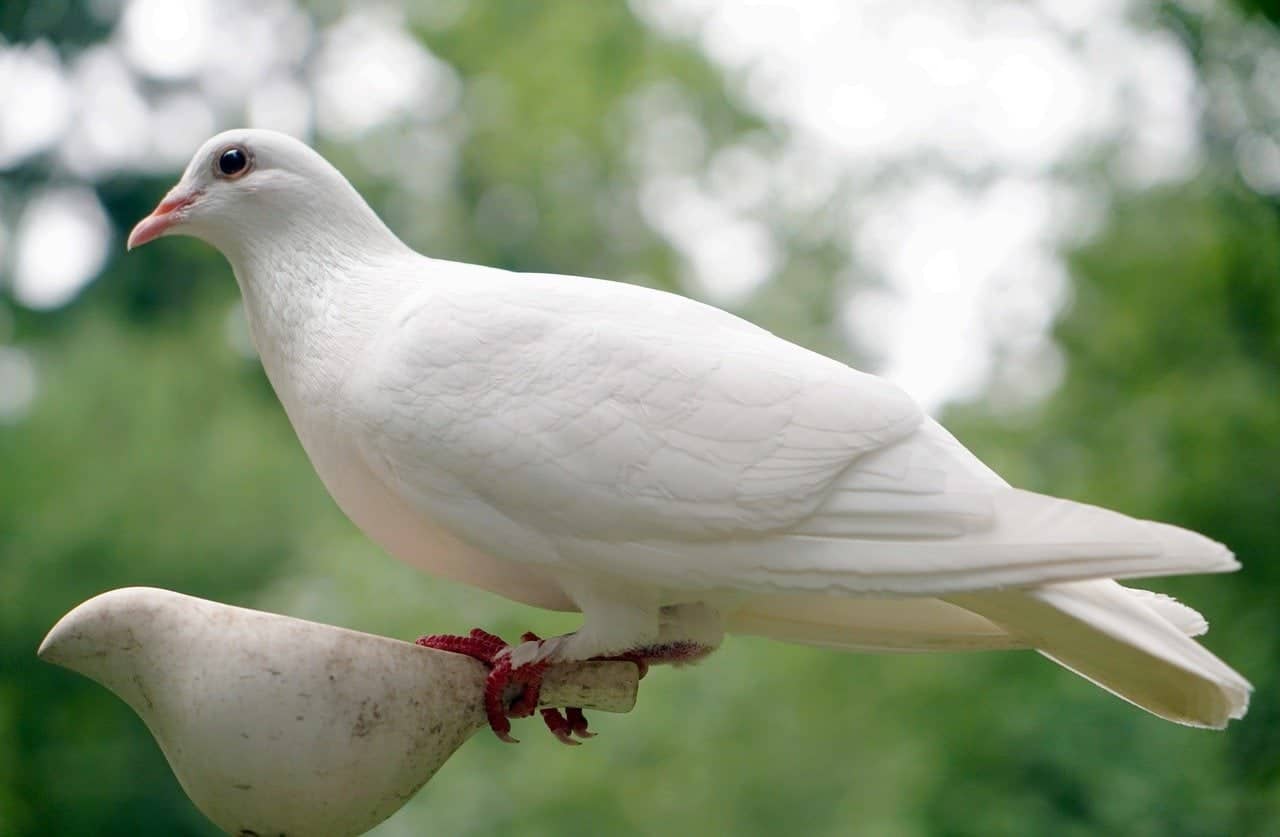
2. Doves can make fantastic pets
Though most people don’t think of doves or pigeons when considering adopting a pet bird, the fact is that they make fantastic pets. They’re good-natured, mellow, and easy to care for. They’re a social species and will do well in pairs or even in flocks. If you choose to keep a single dove, chances are it will probably bond to you as they need to be close to living beings.
3. Not all doves make great pets
Yes, points two and three contradict one another, but it’s true. The most commonly kept doves for pets are the ringneck and diamond doves. However, certain other species have advanced management requirements and large, precise environments.
Eurasian collared doves, for example, are considered an invasive species throughout much of the U.S. and Western Canada.
You also are not to keep mourning doves as pets, as they are protected under the Migratory Bird Act.
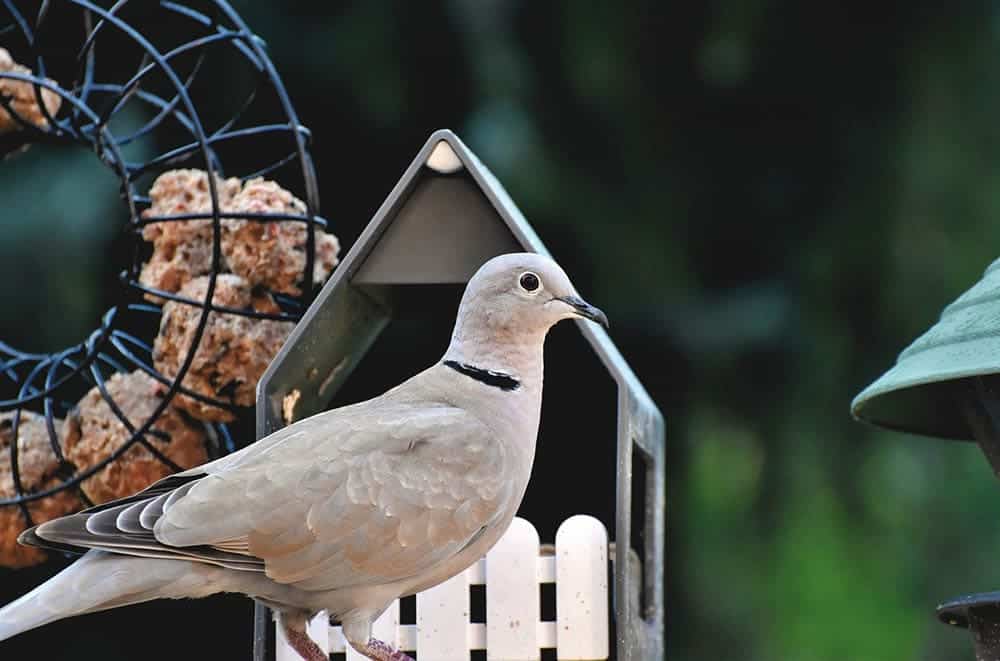
4. Mourning doves are prolific breeders
Most female mourning doves will have three to six broods every breeding season. Their young only stay in the nest for two weeks but will remain close by to continue receiving food from their parents for another week.
Many well-intentioned people mistakenly believe these young doves have fallen from their nests as they can barely fly at this point, not realizing that the parents are nearby keeping an eye on their young.
5. Ring-necked doves are monogamous
Ring-necked doves are monogamous and pair mates for life. They will breed all year long in nests 10 feet or more above the ground. The male will bring his partner twigs, roots, and nesting materials so she can build a platform nest. Some pairs will use the same nest for multiple broods in the same year or may even renovate old nests to reuse.
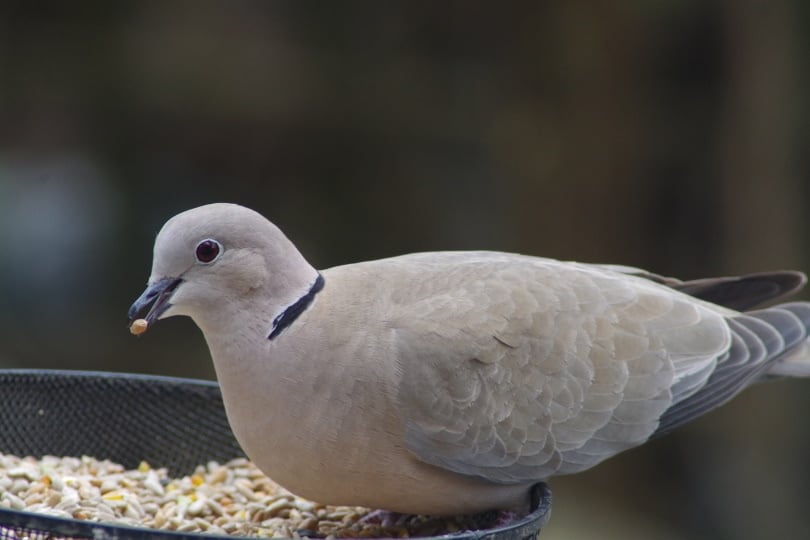
6. Diamond doves are tiny
Diamond doves are tiny, delicate birds approximately the same size as a lovebird with long, slender tails. They grow to be around nine to 11 inches long. While Ring-necked doves are approximately 12 inches long, most of the length of a diamond dove comes from its tail.
7. Pigeons were used as messengers
“Pigeon post” refers to using homing pigeons to carry messages. Pigeons were effective messengers due to their natural homing skills. Unfortunately, there is no definitive answer as to how they are so naturally gifted at knowing where they’re going and how to find their way home. Some people believe it may be due to their ability to detect and orient themselves via magnetic fields, while others believe that olfactory navigation is at play.
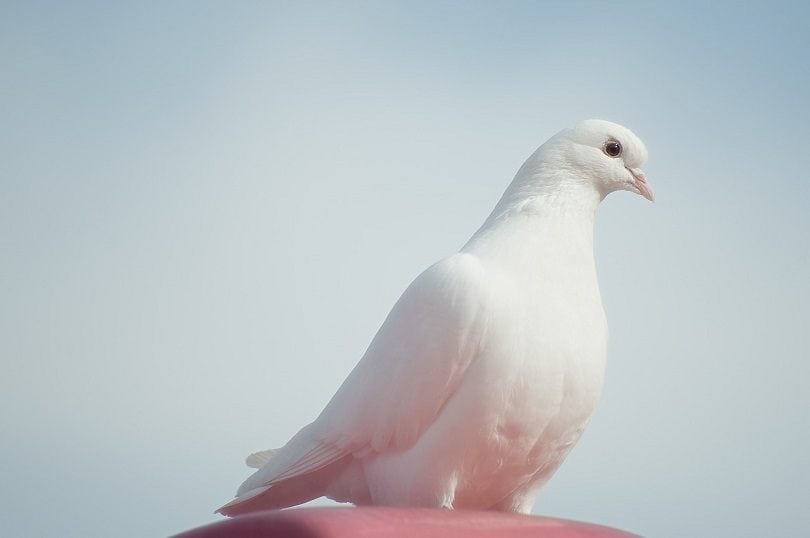
8. Doves drink differently
Doves are one of the few birds that drink by sucking their water up versus taking a bill-full and letting it trickle down their throats. So, it’s easy to identify if a dove is visiting your bird bath as they immerse their bills in water. They can drink their entire day’s worth of water in 20 seconds!
9. Half (or more) of the mourning dove population dies every year
An estimated 50% to 70% of mourning doves die every year. Mortality rates for newly hatched doves can be as high as 70% due to weather, flimsy nests, and predation.
The average lifespan for an adult is 1.5 years.
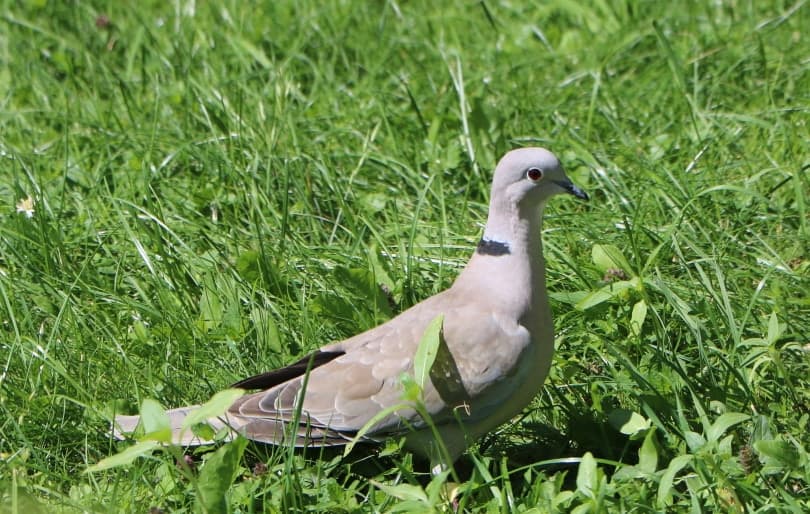
10. Doves have a unique sleeping position
When doves power down for the night, they rest their heads between their shoulders, close to their body. This differs from most other bird species that tuck their heads until their shoulder feathers. Some believe that this unique sleeping posture may result from the doves’ lack of an oil gland, which is useful in keeping other species warm.
11. Mourning doves can fly very fast
The Mourning dove’s pointed wings and tails are longer than other dove species. This may be part of why they can fly so fast—up to 55 miles per hour!
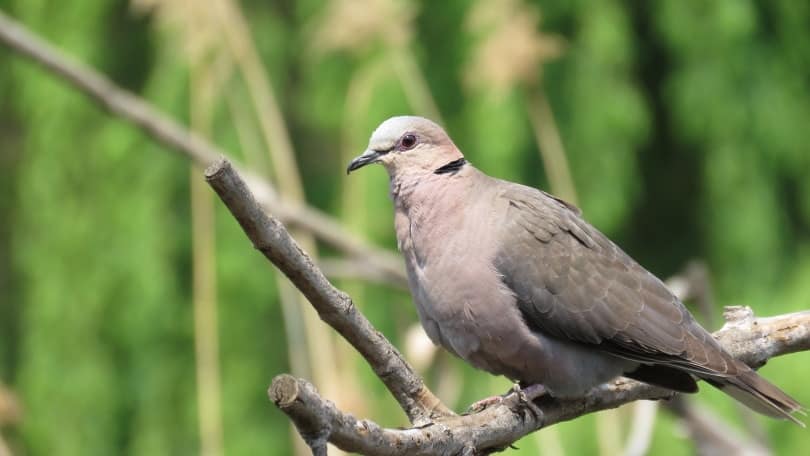
12. Doves’ wings make loud sounds
When mourning doves take off or land, they flap their wings quickly. The air rushes through their feathers, causing them to vibrate and sound like a kazoo. This noise is known as a wing whistle, and it’s part of the species’ natural alarm system.
When one dove becomes frightened and takes off, its wing noises tell other nearby birds they need to be on the lookout for predators.
Researchers compared the sounds of a dove’s wings when it takes off during routine flight to it taking off when a predator is nearby. Their findings show that those who took off in alarm made stronger and faster wing whistles.
13. Diamond doves are residents of Australia
Diamond doves are endemic to Australia, meaning they only live there. They prefer areas near water that are lightly arid or semi-arid in nature. This species is one of the smallest kinds in Australia, along with the peaceful dove.
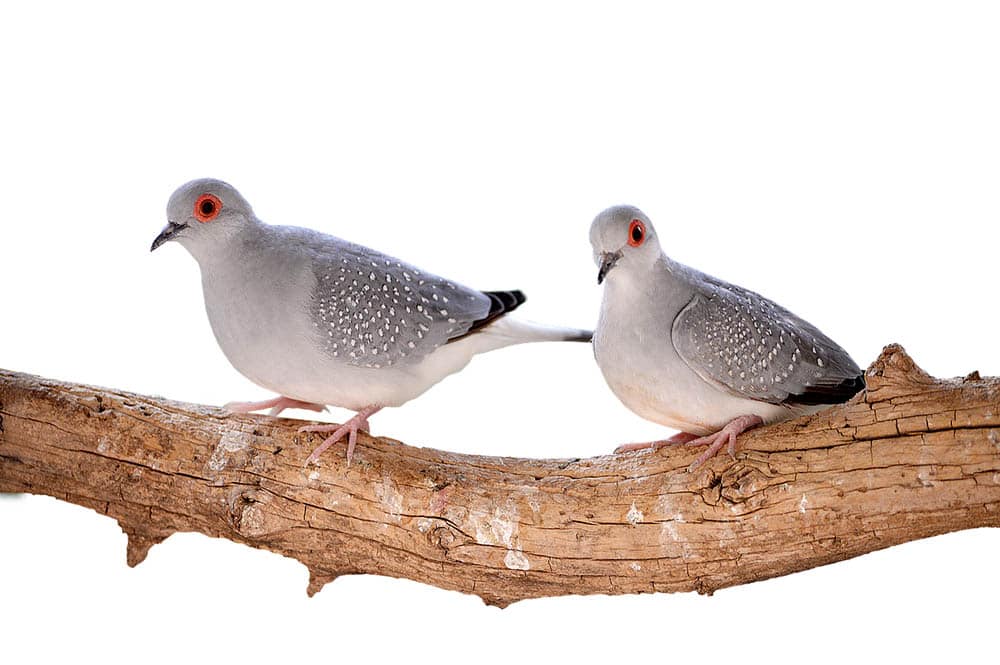
14. Several dove species are now extinct
It’s believed that there are 13 species of doves that are extinct.
- Saint Helena Dove: This flightless bird is endemic to the island of Saint Helena. No official account of this bird exists, and some believe it may have gone extinct before or during the Last Glacial Maximum (20,000 years ago).
- Passenger Pigeons: Once amongst the world’s most abundant wild bird species. Single flocks could contain as many as 2.2 billion birds. Unfortunately, the Passenger Pigeon was hunted close to extinction in the late 19th century.
- Ryukyu Wood Pigeon: They are endemic to the laurel forest habitat in the Okinawa archipelago southwest of Japan’s mainland. They were highly susceptible to habitat destruction and were last recorded in the 1930s.
- Choiseul Pigeon; This kind is endemic to the island of Choiseul in the Solomon Islands. They were a food source for the locals, but the indigenous population believes they became extinct due to feral cats and dogs.
15. Dodo birds belong to the same family as doves
The dodo, an extinct flightless bird endemic to Mauritius, is part of the same family, including pigeons and doves.
Dodos were huge birds, measuring up to three feet tall and weighing around 40 pounds. They lived in an area in isolation from significant predators, so they were fearless of humans. Unfortunately, this fearlessness, coupled with the bird’s inability to fly, made them easy prey for sailors.
It’s widely accepted that the last dodo sighting was in 1662.
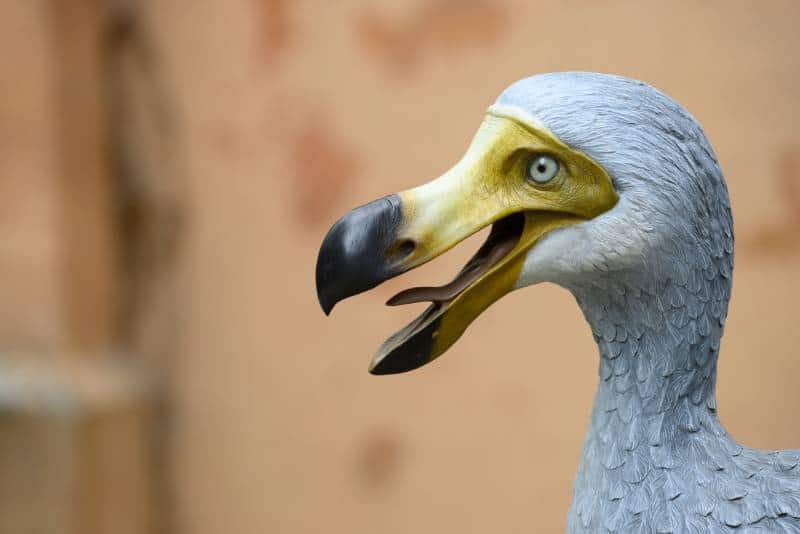
16. Doves hold a lot of symbolism
Doves are often used as symbols of peace, love, and freedom. They appeared in Judaism, Christianity, Islam, and paganism and were prominent symbols of Inna, an ancient Mesopotamian goddess of love, beauty, war, and fertility.
Releasing a white dove at a funeral has become a popular trend, comforting mourners watching the dove fly into the sky as if it were transporting the deceased’s soul to heaven.
Doves are sometimes released at weddings as they symbolize happiness, peace, and prosperity. In addition, since many species of doves are also monogamous, releasing them at a wedding can represent the couple’s commitment to one another.

Final Thoughts
There are many species of doves, making these birds incredibly unique and interesting to study. No two dove species are the same, and the more you learn about them, the more you’ll see this is true.
We hope you’ve learned something new about doves as you read our blog. Keep the knowledge coming by checking out our blog on how long pet doves live.
Featured Image Credit: Aruns212, Pixabay
